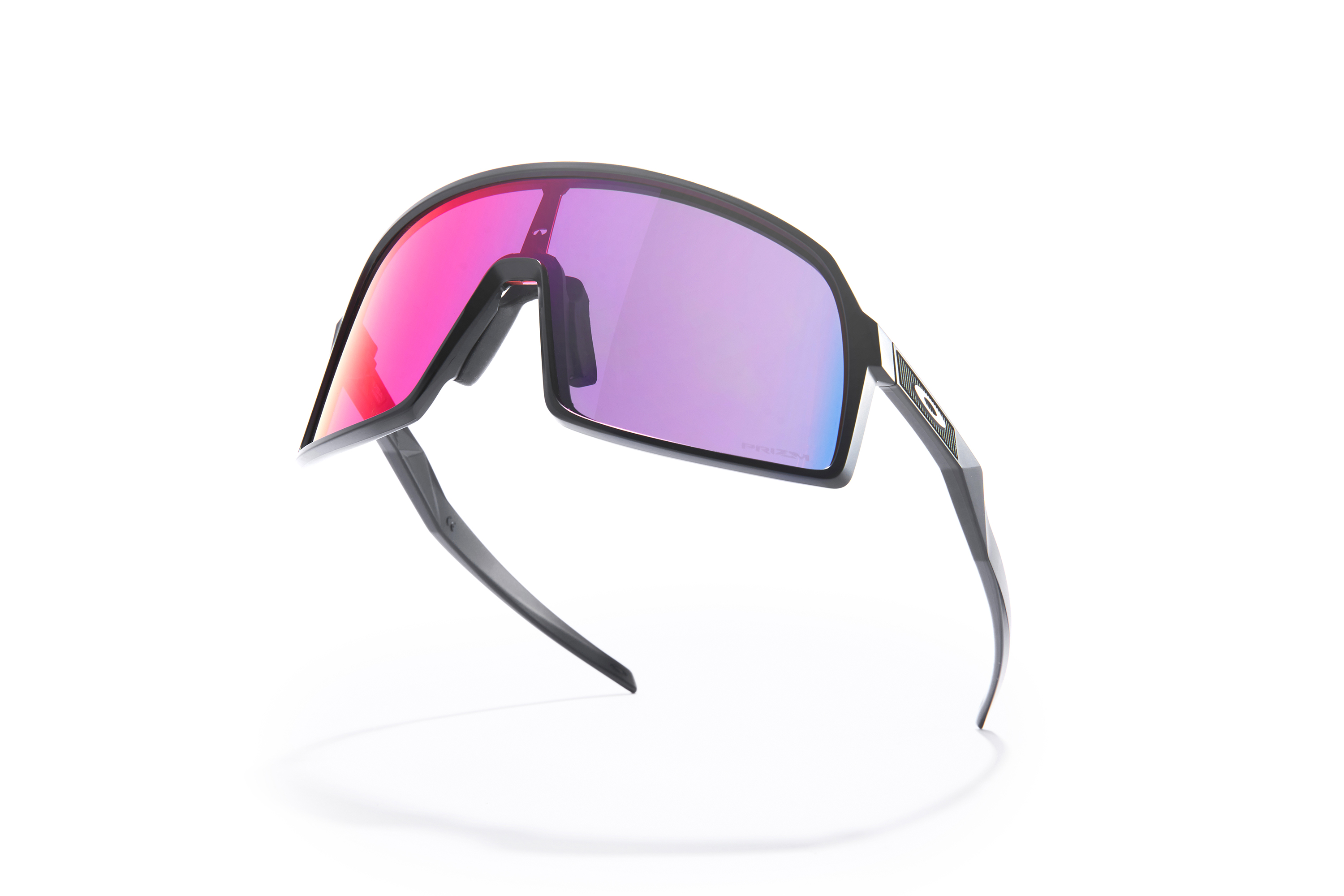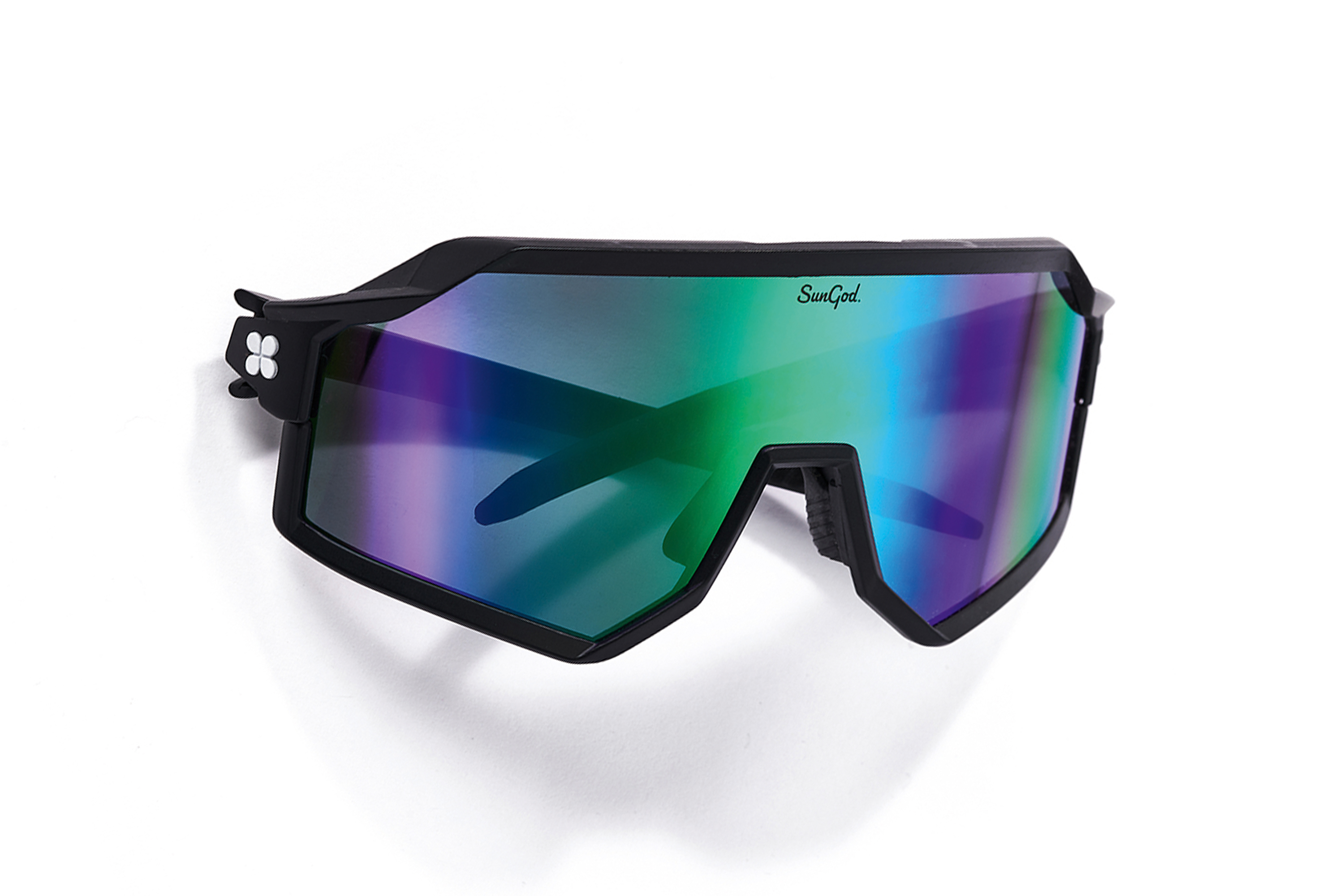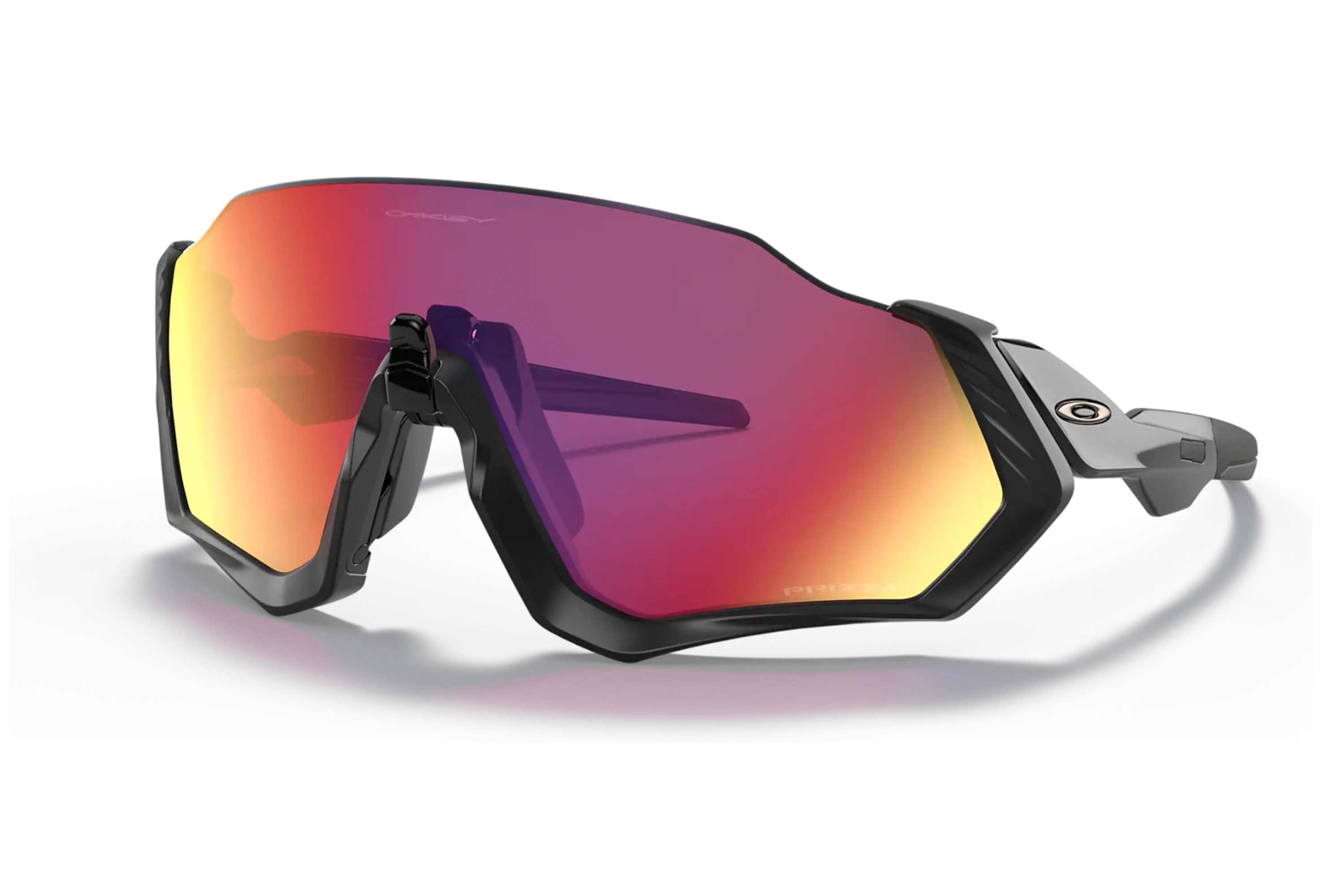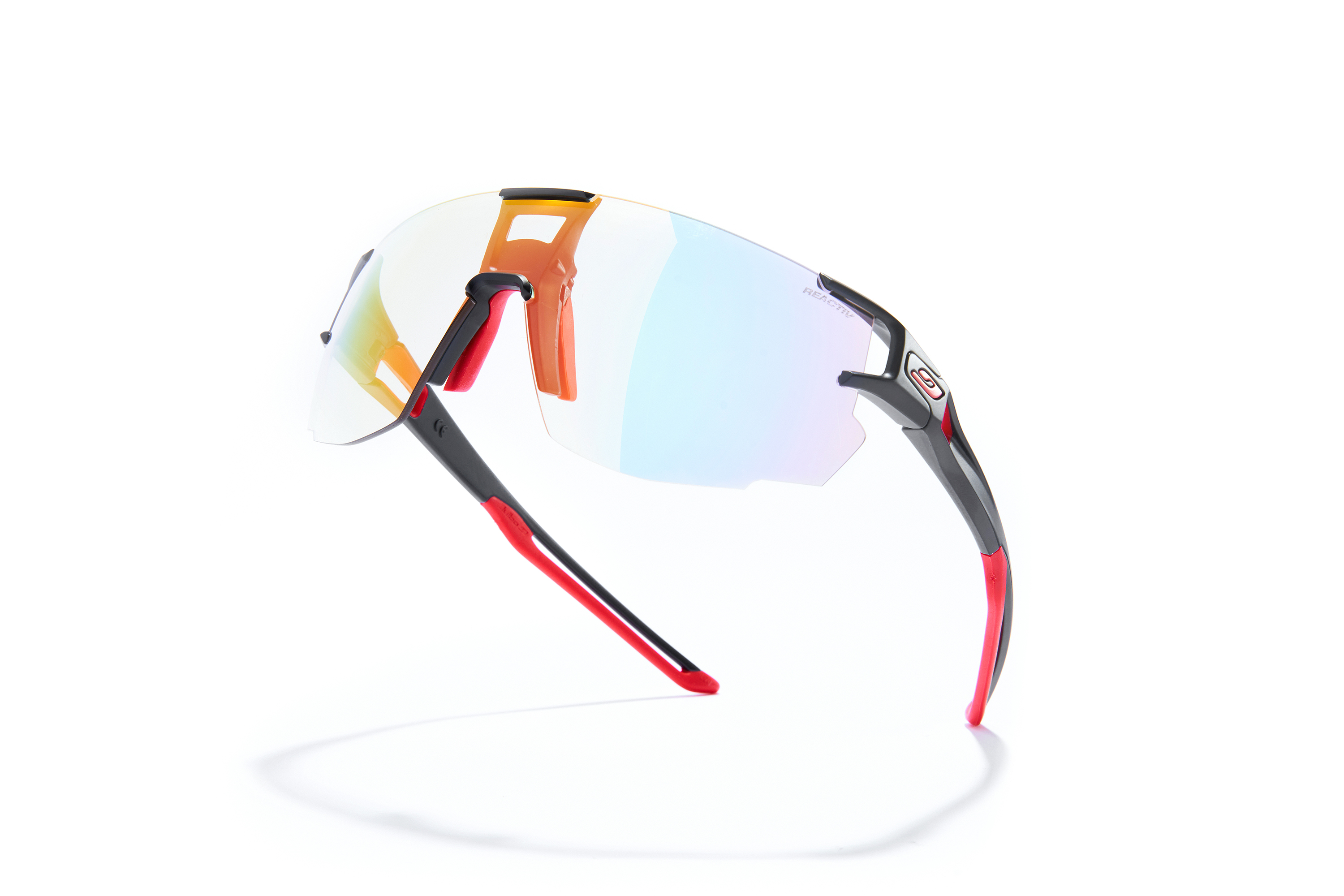Best triathlon sunglasses reviewed in 2025
The best triathlon sunglasses will divert blazing sun, blustery wind, bugs and more from your vision on the bike and run. Here are our top picks

A pair of the best triathlon sunglasses can make all the difference to your performance.
Not only do they have an über professional look, but eye protection against harsh glare will also help you squint less, which is proven to conserve precious energy.
And that’s not all – they’ll also protect you from wind, bugs and dirt flying through the air, and can even improve the clarity of your vision.
Scroll down to see our pick of the best triathlon sunglasses on the market right now or head to the bottom of the page to find out how we tested.
Best triathlon sunglasses
Smith Motiv
Buy now from Smith Optics

220 Triathlon verdict
Great, versatile pair of high-end sunglasses for triathlon that can be worn year-round. Score : 87%
Pros
- Visually stunning
- Good clarity and protection
- Nice level of wind coverage
Cons
- High tint not for dark conditions
- Nose piece niggles
- £150 / $219
The Motive sunglasses combine style and function, with the dual-lens design offering a clear, wide field of view. ChromaPop Opal Mirror lenses enhance colour and clarity, handling bright light well, though shaded areas remain a challenge.
Wind protection and top-frame clearance in aero cycling positions are excellent. The glasses fit pretty comfortably, though the nose piece may press lenses too close for some.
Priced at £178, they include a hard case and spare lenses for year-round use. RS
Read our full Smith Motiv review
Tifosi Vogel SL

220 Triathlon verdict
You get a lot for the money, but there are a few compromises. Score: 80%
Pros
- Impressive value
- Clarity in bright conditions
Cons
- Not complete coverage
- £55 / $39.95
Tifosi’s entry into this test goes head-to-head with Madison for the best value gong, with it’s price of £54.99 looking very attractive.
The Vogel SL gets off to a good start, too, its frameless design delivering a largely unimpeded view, but the lens does cut off quite early at the bottom, which is sometimes in view.
It’s also worth noting that at times, particularly when looking over the shoulder, the points where the arms connect to the lens do cut into the view.
The smoke lens is great in bright conditions, bit a little on the dark side on gloomy or shaded outings. There’s a reasonable boost of contrast to help you spot details on the ground, too.
Given the smaller lens profile, some wind can bypass the glasses, particularly on fast sections of road, but the fit is secure and comfort is high. There’s no case, though. RS
Koo Supernova

220 Triathlon verdict
Very light and flexible, but a little too large. Score: 80%
Pros
- Incredibly lightweight
- Impressive lens performance
Cons
- Fit is a little loose
- £170 / $200
Weighing in at only 21g, the fact that these sunnies are extremely light and flexible are the first thing you notice when you push them on.
They did feel a little large/wide for this female tester and I preferred the more secure feel of the Sungods.
The arms could have done with being a little grippier, too, though again you get a choice of nose bridges.
Six different lens/frame combos are available and the green lenses supplied here are suited to sunny days and light cloud, which I felt performed well during a sunny test weekend.
On the flip side, they are expensive for eyewear that can’t be used on gloomier days. Range of vision was superb, though. HW
Oakley Sutro

220 Triathlon verdict
Robust sunnies with great clarity and coverage. Score: 87%
Pros
- Lens enhances colours and contrasts incredibly well
- Comfortable and secure fit
Cons
- This lens choice isn’t the most versatile and can feel a little dark
- £159 / $192
Using Oakley’s Prism Road lenses, the Sutros are designed to enhance colour, contrast and detail, which they did with aplomb, while the level of clarity and field of view is impressive.
Having said that, in darker conditions or dappled light, they can feel a little dark, though other lenses are available when purchasing.
The complete-frame design ensures durability but impacts ventilation a little during hard sessions. Comfort is good, with the nose bridge and arms providing a secure fit, but rubber grips on the arm tips would’ve been a welcomed addition.
The lofty 56.7mm-high lenses provide ample coverage but may feel a little too large for some. RS
Madison Code Breaker II

220 Triathlon verdict
A great entry-level option that offers a lot of value for money. Score: 75%
Pros
- Fantastic value for money
- Spare lenses and hard case
Cons
- Wind can get through vents
- Some movement when running
- £59.99
The Code Breaker II sunglasses are among the cheapest sunglasses on test and they punch above their fiscal weight, yet there are some flaws…
Lens performance was decent, but not perfect. The cat three tinted lens is designed for bright conditions, but it struggled when riding toward a low-slung sun, while clarity and contrast is not as pronounced as other options.
The field of vision is perfectly acceptable, though, even when riding in an aero position, while the glasses felt secure and comfortable in most conditions.
That being said, there was a bit of movement in run sessions.
Large vents help fend off fogging but can allow wind to get through to your eyes on occasion.
Impressively, the glasses also come with a clear lens and category one amber lens for darker conditions, plus a hard case. RS
BBB Cycling Chester

220 Triathlon verdict
A versatile option, but not the most secure and other lenses perform better. Score: 70%
Pros
- Attractive price
- Good coverage
Cons
- Fit wasn’t the most secure
- Frame is sometimes visible in field of view
- £99.99
While almost half the price of some options, £100 is still a lot of money to spend, so does the Chester live up to its price tag?
Well, I found them a little uninspiring to look at. BBB has gone for a hybrid frameless/full frame design, with the frame sitting behind the lens.
In effect, I didn’t notice much difference to a standard full-frame design, with the bumpers often visible in my peripheral vision.
The large lens delivers good protection from the wind and its photochromic nature (VLT is 82-17%) means it adapts to light conditions, but I did find myself squinting a bit on the brightest of days when riding toward the sun. It doesn’t noticeably boost road details, either.
The fit wasn’t perfect for me at the nose, even after adjusting the nose piece, and the glasses tended to slide downward on test runs and rides.
The lack of hard case also sees points docked. RS
Sungod Velans TF
Buy now from SunGod

220 Triathlon verdict
We love the range of options, plus they’re light and comfy. Score: 88%
Pros
- Customisation when buying is a plus
- Fantastic visibility
- Fit was great
Cons
- Little to fault
- £130 / $160
Choice and adaptability are key in this sleek design. That TF in the name stands for ‘top frame’ and cleverly the Velans are also available in FF (full frame, £150/$180), which gives you a removable bottom ‘jaw’.
These get my vote, though, as visibility was excellent with a good, clear range of vision and no misting.
They fit this female tester well (three nose bridges supplied) and didn’t feel too over-designed like some in the current sports-sunnies market.
The gold lenses supplied gave sharpness and clarity on a freak sunny March weekend, as well as in dappled light, though 12 lens tints and multiple frame colours are available. HW
Bollé Shifter

220 Triathlon verdict
A solid offering from Bolle, but price bracket means it has stiff competition. Score: 80%
Pros
- Lens performance is decent
- Fit securely and deliver great field of vision
Cons
- Price puts it in top bracket
- Frame sometimes comes into view
- £180 / $200
That’s a hefty price, but is the Bolle Shifter worth it? Like the Oakley BiSphaera, the Shifter comes with a grey tinted lens and is designed to protect against bright light, with a VLT of 15%.
It does that job well, and is also perfectly acceptable in dappled light overcast days.
That Volt+ lens does a fine job of boosting contrasts and enhancing colours, while clarity was also decent.
The glasses sit quite close to the face, so there’s no issue with wind or airborne debris getting into your eyes, while the fit is secure and comfortable.
Field of vision is also very good thanks to the large size, with no issues when in an aero position on the bike.
That said, the bottom half of the frame can occasionally be a distraction, particularly given the bright yellow colourway shown here.
A hard case comes included.
- How to prepare for racing in hot weather
- How hot weather affects your body and your ability to train and race
- Best electrolyte drinks tablets reviewed
- Energy gels: how they work and when to take them
- Why do I get itchy skin when I sweat?
Van Rysel RoadR Perf 900

220 Triathlon verdict
Good value, but lacking in comfort and lens performance is just okay. Score: 70%
Pros
- Good price
- Large range of vision
- Decent lens performance
Cons
- Coverage and protection isn’t perfect
- £59.99 (UK only)
Here’s another budget-friendly option from Decathlon’s Van Rysel. The Roadr Perf 900 comes with classic cycling glasses styling, with that large lens ensuring a fantastic field of view.
Our test pair came in the translucent colourway, which I did find slightly distracting when it caught the sun at the bottom of the frame. The fit is mostly secure, with only a minor bit of movement when testing during run sessions.
While not exactly uncomfortable, these sunglasses don’t deliver the same level of comfort as many others on test, with the nose piece and arms feeling too firm for my liking.
The lens did a reasonable job in a range of light conditions, but was mid-pack for its performance in bright light, while there wasn’t much in the way of a boost to clarity or contrasts.
Protection from wind and airborne nasties is largely okay, but the lenses do sit a reasonable distance away from the face, so it isn’t infallible. There’s no case, either.
Rudy Project Kelion
Buy now from Rudy Project

220 Triathlon verdict
A great option for triathlon, but hard to ignore that high price tag. Score: 83%
Pros
- Incredible coverage from the large lens
- Photochromic lens delivers versatility
- Hard case included
Cons
- Lens doesn’t boost contrasts as well as some others
- £208.99 / $219.90
That is some price, so the Kelions better be worth it. Luckily, they have a lot going for them.
The field of view delivered by 62mm-high lens is exceptional, as is the protection this gives you from wind, bugs and the like.
The lens featured in my test pair is the brand’s ImpactX 2Laster Black. It’s a photochromic option with 62-13% of VLT, meaning it’s versatile enough to work on gloomy days as well as sunny ones.
Its performance when riding toward the sun was decent, but was just pipped by Oakley BiSphaera.
The Kelion doesn’t boost contrasts quite as well as one of two other pairs on test, either.
Comfort was high, but the arms may feel a little tight for some, depending on your head shape.
The nose piece is adjustable and all things considered, the glasses felt very secure throughout testing.
The inclusion of a hard case is appreciated, as is the use of sustainable material Rilsan in the glasses’ build.
Alba Optics Stratos
Buy now from Alba Optics

220 Triathlon verdict
Great arms and low weight, but better lenses on test. Score: 70%
Pros
- Very lightweight
- Lack of frame means uninterrupted field of view
Cons
- No alternative nose pieces
- Questions about durability
- £145.89 / $179.68
Handmade in Italy and a featherlight weight of 30g are two instant appeals of the Stratos, the latter due to the pair lacking a main frame.
That gave me concerns over durability, especially in the chaos of transition come race day, but they come close to the Roka in their near-invisible run prowess.
In terms of adjustability, there’s no replacement nose piece (you can opt for an ‘Asian Fit’ nose pad when purchasing), but the arms have four different length options, a neat feature for added grip on the run.
There’s an interchangeable lens but no spares are provided. MB
Roka GP-1X
Buy now from Roka

220 Triathlon verdict
Add an extra lens for low light and these would be best on test. Score: 83%
Pros
- Great field of vision
- Super lightweight and high performance
- Multiple nose pieces included
Cons
- Massive price tag
- £230 / $240
Roka has strong pedigree in performance eyewear and its products have been worn by Ironman World Champ Lucy Charles-Barclay for a number of years.
The brand’s offering here comes with one large single category three lens, which delivers 12% of VLT. They look sleek and that lens offers very good performance on the brightest of days, but feels a little dark when the clouds come in or you’re riding through woodland.
There’s no spare lens to counteract that, either, which would have been nice for this price. The field of view is brilliant, though, and the large size means there’s no wind, bugs or dust getting through.
They’re extremely comfortable, but I did experience a slight hint of movement during testing. Four nose pieces are included to help counteract this, though the arms aren’t as tight as many competitors. You do get a case, though. RS
Sungod Vulcans FF
Buy now from SunGod

220 Triathlon verdict
Durable and secure, but no spare lens. Score: 87%
Pros
- Fantastic lens performance
- Excellent coverage
- Full frame offers solid durability
Cons
- No spare lens
- £160 / $190
The Vulcans come in two modes: the TF (top frame, £140/$170) and the FF (full frame, £160/$190) here, which sees the frame extending under the lenses for added durability.
That move does see the weight increase by 5g to 37g, but it still wasn’t an issue on the run.
Unlike Sungod’s debut Pacebreakers, the Vulcans provide a huge amount of facial coverage without a noticeable gap.
But it’s the lens that really excels here, offering versatility and fog-free riding in a variety of changeable conditions.
You don’t receive a spare lens, but the custom options are extensive. MB
Scicon Sports Aerowing
Buy from Scicon Sports

220 Triathlon verdict
Great pair but there’s a knack to swapping the lens. Score: 89%
Pros
- Interchangeable lenses
- Impressive coverage and field of view
- Great adjustability
Cons
- Tricky to swap lenses
- £125 / $170
The large shield design of the 33g Aerowing is on-trend, giving both wide facial coverage and an obstructed view on the hoods (part of the top frame creeps into the vision on the tri-bars, though).
Adjustability is best in class, with the nose pieces offering horizontal and vertical movement; the arms can be bent and reinforced to secure the desired level of grip and flexibility; and a series of venting channels prevent fogging.
We didn’t feel fully confident swapping out the lenses for the included clear pair, though – not ideal when the outlay is £125/$170. MB
Tifosi Alliant Interchangeable

220 Triathlon verdict
A strong pair of eyewear for the price. Score: 80%
Pros
- Very comfortable
- Spare lens
- Stable when racing
Cons
- Vents are too noticeable
- £69.99 / $69.95
One of the cheapest pairs here, the Alliant punches above its fiscal weight and wrap comfortably around the face.
They come with two lenses for lighter and darker conditions that, while not providing the definition and clarity of its higher-end competition, is pretty good.
Vents at the top and bottom increase airflow to prevent fogging, yet the slightly narrow lens means the base vents are too noticeable. The nose bridge is also too big and adds interference.
Yet construction is solid and the rubber ear pieces provide stability. From experience, the Grilamid TR-90 frame material will last a few seasons. MB
Oakley Flight Jacket
Buy now from Oakley

220 Triathlon verdict
A pricey let-down from the optic legends. Score: 72%
Pros
- Impressive lens performance
- Good field of view
Cons
- Nose piece is uncomfortable when in venting mode
- £194 (outgoing model)
The Oakley Flights follow a similar design to the brand’s Jawbreaker model, though they lose the top part of the frame and feature a chunkier finish.
They also provide Oakley’s ever-impressive Prizm lenses, offered in Prizm Road, Prizm Low Light or Prizm Trail. Prizm Road works wonders at increasing the contrast of vision and making colours sing while riding or running.
But what muffles those bright notes is the unique nose vent that, when flipped, lifts the glasses slightly away from the face to improve venting.
Sadly the execution is poor as the bridge becomes uncomfy, especially when on the run. MB
Julbo Aerospeed
Buy now from Sportsshoes

220 Triathlon verdict
Light and great field of vision, but not the most secure. Score: 84%
Pros
- Versatile lenses
- Unhindered field of view
Cons
- Arms don’t fit that securely
- Can struggle in super bright conditions
- £144.99
Designed with triathletes in mind, these Aerospeed glasses sport the brand’s Reactiv lenses. In theory, this means they adapt to various light conditions.
In practice, they deal with changeable conditions very well, particularly in dappled light, but on the brightest of sunny days they aren’t quite as effective at blocking light as the likes of Oakley with their darker lenses.
Elsewhere, field of vision is unhindered and clarity is good, striking the balance between decent coverage without looking massive when on.
They’re comfortable to wear and the adjustable nose pads are a nice touch, but the arms didn’t fit quite as securely as we’d like. MB
How we tested
All of the sunglasses featured here have been tested by 220‘s expert gear reviewers, which includes editor Helen Webster, former features editor (and now editor of Cycling Plus) Matt Baird and content editor Rob Slade.
Between the three of them they have over 35 years of experience testing kit.
When rating the best triathlon sunglasses, we considered fit, comfort, performance in bright light, versatility in different lighting conditions, field of vision, clarity, value, protection against wind and airborne debris, plus the lenses ability to avoid fogging up.
If we rate a product with a score of 90% or more, it means we are mightily impressed and it’s hard to find fault. Anything scoring between 80-89% is also incredibly impressive and among the best on the market.
A score of 70-79% means the product is worth considering, as it does some stuff well, but it will also have a couple of flaws. Anything below 70% is likely to have one or two major issues, or a series of smaller ones, so consider if they bother you before thinking about buying.
What to look for in the best triathlon sunglasses
When shopping for a new pair of sunnies, go for one with a high UVA rating to protect your corneas from sun damage, even if you just race in the UK.
Like some of the glasses here, many brands will supply multiple interchangeable lenses, so you can adapt the choices depending on variable lighting conditions.
This versatility is useful when cloudy days call for a lighter lens or if a sun-drenched course requires a darker pair to provide adequate clarity.
Recent years have seen the introduction of the photochromatic lens, which becomes darker when exposed to high UV rays. Changing out these lenses can be a precarious task, however, so a durable frame is essential.
While this type of eyewear summons references to obscure ’80s pop bands, the visor-style, wraparound lens shape does offer the best performance advantage as it optimises the field of vision and coverage.
On this note, options without a top frame can be useful if you plan to be riding on your clip-on aerobars or a triathlon bike, as otherwise it can impede vision.
A sturdy frame that sits close to the eyes is also desirable to help with windchill on the ride, while incorporated vents and an anti-fog coating are lifesavers when huffing and puffing through T2 onto the run.
Finally, to reduce the chance of your sunglasses bouncing on the fly ensure you have a snug fit on the nose bridge and silicon grippers along the arms, which will also help improve comfort.
Don’t need options just for multisport? Take a look at our list of the best running sunglasses for more options.






